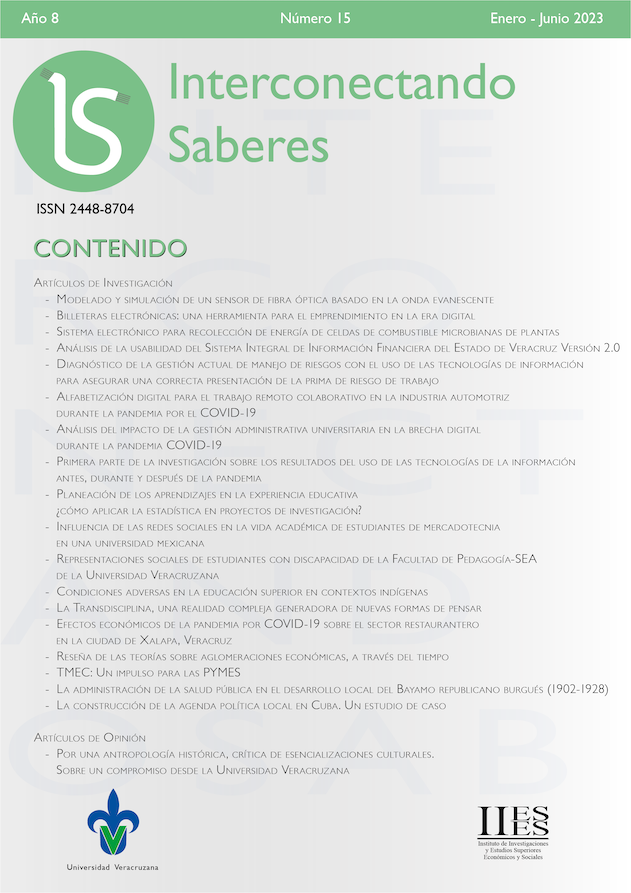Abstract
The objective of this article will be to know the way in which the full-time teachers, from the FCAS, adapted and were able to get ahead, faced with the challenge of modifying their teaching-learning techniques from a face-to-face way to another in which very few had dared to delve into virtual or distance education. This article explains the way in which this research will be carried out: first, it will discuss the environment in which the FCAS teachers were before and during the pandemic, the objective of the research, the methodology that will be used; In this part, the universe that will be used as a base will be explained, to later establish the technique chosen to determine the sample, then the instrument that will be used to collect the information will be presented. It is important to clarify that this research presents the first part.
References
Abad Espindola E. (2021).Informe de Actividades 2020-2021. Universidad Veracruzana. U.V. https://www.uv.mx/fcas/files/2022/06/Informe-de-actividades-FCAS-2020-2021.pdf
Atuesta, B., & T. Van Hemelryck, T., (2022). Protección social de emergencia frente a los impactos de la pandemia de COVID-19 en América Latina y el Caribe: evidencia y aprendizajes sobre sistemas universales, integrales, sostenibles y resilientes de protección social, Documentos de Proyectos (LC/TS.2022/143), Santiago, Comisión Económica para América Latina y el Caribe (CEPAL)
Salinas Ibáñez, J. M. (2006). Enseñanza flexible, aprendizaje abierto. Las redes como herramienta para la formación.Edutec. Revista Electrónica De Tecnología Educativa, (10), https://doi.org/10.21556/edutec.1999.10.567
Instituto Nacional de Estadística y Geografía [INEGI]. (2020).El impacto del COVID-19 en la educación en México. INEGI. Recuperado de https://www.inegi.org.mx/contenidos/investigacion/ecovided/2020/doc/ecovid_ed_2020_presentacion_resultados.pdf
Mendoza, J. (2020). Presupuesto federal de la educación superior en dos décadasy primeros impactos de la crisis sanitaria de 2020. En: Educación y pandemia. Una visión académica. México: IISUE -UNAM.
Nieto Göller, R. (2012). Educación virtual o virtualidad de la educación. Revista Historia de la Educación Latinoamericana. 14 (19), pp. 137-150
Ochoa, C. (2015). Net Quest. Recuperado el 02 de Enero de 2023, de http://www.netquest.com/blog/es/blog/es/muestreoprobabilisticomuestreo-estratificado
Osorio Gómez, L. (2010). Características de los ambientes híbridos de aprendizaje: estudio de caso de un programa de posgrado de la Universidad de los Andes. Revista de Universidad y Sociedad del Conocimiento (RUSC). 7 (1).
Orquera, M. (2012). Aulas Virtuales en la Educación presencial. El Investigador. (4). pp. 50-59. https://issuu.com/utnuniversity/docs/el-investigador-n04/50
Secretaría de Educación Pública, (2020). Lineamientos de Acción COVID-19 para las Instituciones Públicas de Educación Superior. México: Secretaría de Educación Pública. http://www.anuies.mx/recursos/pdf/LINEAMIENTOS_COVID-19_IES_SES_VFINAL.pdf

This work is licensed under a Creative Commons Attribution-NonCommercial-NoDerivatives 4.0 International License.
Copyright (c) 2023 Rosa Ela Gutiérrez Bonilla, Manuel Ignacio Martínez Acuña

